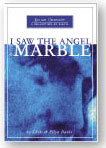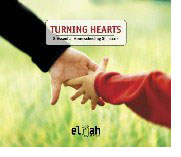Home Schooling High School
Read past issues of the
e-journal HERE>> Sign up below.
by Ellyn Davis
The high school years are when many parents stop teaching their children at home. These parents feel overwhelmed by the demands of high school subjects, feel unqualified to teach upper level math and sciences, and begin wondering if their children need the social exposure and athletic opportunities found in public and private high schools.
Also, there is the question of accreditation and transcripts for students wishing to go to college. Last, but not least, during the high school years children begin expressing themselves much more forcefully and it would be easier for parents to let someone else require schoolwork from a teen who is going through mood swings or becoming argumentative.
If we do nothing else, we want to encourage you to do all you can to keep your child at home during the high school years.
If you find your resolve drooping, your vision dimming, your enthusiasm waning, watch Josh Harris’s videotape Why Home School Through High School or listen to Ellyn Davis’ seminar on Charting a Course for High School, or read Dumbing Us Down by John Gatto. The teen years are crucial to the identification and legitimizing of a child, and we can’t afford to let others set our children’s life course for them.
Plus, the teen years are when home schooling parents begin seeing the fruit of their labors of home schooling the early years. As your children move toward adulthood, their relationship with you will begin changing from "child" to "friend," and that is a precious thing you don't want to miss.
Options for High School
There seem to be three common teaching options for high school. First, the textbook route. Parents who want their children to go to college and who are unsure about how to cover all the requirements at home often choose to buy each year’s curriculum from a Christian publisher who produces textbooks or videos with textbooks that parallel the scope and sequence of the public schools. The second option is the non-textbook route, where the necessary core subjects and electives are covered by using alternative, non-textbook resources. The final option is a combination of textbooks and alternative resources which together cover all essential requirements.
There are four basic decisions that must be made no matter which teaching option is chosen:
Envision the child's future. Most parents can tell by the time their child is 12 or 13 whether he/she is suited for a profession or trade. This is when we have to be realistic. Even though we might want our son to become a doctor or lawyer, he might do better as an auto mechanic. We need to map out the high school years as a “career pathway” that lays a foundation for what will serve our sons and daughters well as adults. If college is in their future, there are certain course requirements that must be met. If college is not in their future, there are still state requirements that must be met and an emphasis on certain courses important to the child’s future. Your state Board of Education can provide you with high school course requirements, and your state’s Board of Regents has a list of college entrance requirements.
Map out a course of study. The average high school credit requires 100 hours of study. This study can be accomplished through textbooks or through independent projects you devise yourself. If using a non-traditional approach, you will have to decide your own course requirements such as: What will this course entail? What will have to be done for the work to be considered completed? What constitutes an A, a B, a C, in this course? Some parents gear the course work to the PSAT, SAT, ACT, or achievement tests and “teach to the tests,” others cover the required number of course credits in a way that best suits their family.
Devise a record keeping system. You will need to devise some sort of transcript that shows the number of credits in each subject and the grades in each course. The closer you can make this look like a traditional high school transcript, the better. It also helps to keep a portfolio of selected projects and a list of extracurricular activities like church work, 4-H, apprenticeship opportunities, etc. The Home Schooler’s High School Journal is a good record keeping system for high school because it helps you keep track of credit hours in each course. Both Relaxed Record Keeping and Creating Transcripts have ideas for developing transcripts from non-traditional course work.
Find out what your state homeschooling organization offers. In our state, the state organization arranges diplomas, graduation ceremonies, and awards for graduating seniors. These not only give special recognition to the graduates, but also give the kind of legitimacy to home schooling that is so reassuring to relatives and to the state. Your organization may provide similar services.
General Resources for Home Schooling Through High School
Charting a Course for High School by Ellyn Davis of Home School Marketplace is a CD explaining why the high school years are crucial years of identifying who each child is and how we parents can use high school to prepare our children’s futures. This message is part of an 8 CD set on home schooling called Turning Hearts.
 Homeschooling the Teen Years. Cafi Cohen speaks from experience about teaching teens at home. Her book paints a picture of the many paths to success, including all the details of preparing a student for college. Homeschooling the Teen Years. Cafi Cohen speaks from experience about teaching teens at home. Her book paints a picture of the many paths to success, including all the details of preparing a student for college.
The Christian Home Educator's Curriculum Manual, Volume 2. If you are trying to tailor teaching materials to your family's needs and values, this is the place to start. Using the four different learning styles, Cathy Duffy shares how to choose curriculum that works best with your teenager; helps for college, career, and vocational planning; how to “graduate” your child from high school; ideas for record keeping; and reproducible charts. She recommends the best teaching materials for each type of learner.
 Discovering Your Children’s Gifts by Don and Katie Fortune. This book does an exceptional job of taking the list of spiritual giftings in Romans 12 and showing parents how those giftings express themselves in their immature forms in children. There is a different chapter for each gift describing the gift, how it tends to operate in children, how it affects the way the child learns, and how it gives a child a bent toward a specific life’s work. Very informative. Discovering Your Children’s Gifts by Don and Katie Fortune. This book does an exceptional job of taking the list of spiritual giftings in Romans 12 and showing parents how those giftings express themselves in their immature forms in children. There is a different chapter for each gift describing the gift, how it tends to operate in children, how it affects the way the child learns, and how it gives a child a bent toward a specific life’s work. Very informative.
What Color is Your Parachute for Teens? This book has been around a long time because it has no equal. It is considered the best book available for determining which job is most suitable for a person and how to go about getting it. Note: This book covers getting a job in all job markets.
 Finding the Career That Fits You by Lee Ellis and Larry Burkett is a hands-on workbook filled with worksheets that help you pinpoint your personality type, skills, life values, and vocational interests. Burkett’s Career Pathways organization has thoroughly researched the job market to determine which skills will be most needed and which jobs are best suited to particular personalities and aptitudes. By working through this book, you will discover how to pursue a career that is the wisest investment of your God-given abilities. Finding the Career That Fits You by Lee Ellis and Larry Burkett is a hands-on workbook filled with worksheets that help you pinpoint your personality type, skills, life values, and vocational interests. Burkett’s Career Pathways organization has thoroughly researched the job market to determine which skills will be most needed and which jobs are best suited to particular personalities and aptitudes. By working through this book, you will discover how to pursue a career that is the wisest investment of your God-given abilities.
Homeschooling High School by Jeanne Dennis. Not only does this book offer reading lists, suggested topics to cover in courses, and lists of materials for science, but the author offers a collection of forms that is invaluable. She has time sheets, reading logs, and most importantly, a transcript. I've always wondered what a professional transcript was supposed to look like. There are many other forms as well.
Homeschooling for Excellence by David and Micki Colfax. The Colfaxes’ homeschooling primarily consisted of a lot of hard work establishing a homestead. They explain their process of homeschooling four sons through high school and having each of them receive scholarships from top schools like Harvard and Yale.
Preparing for Adolescence by James Dobson. Although this book assumes the teenage years will be turbulent, it is one of the few Christian resources about puberty. We suggest that you read it first, then work through it with your child. It covers the feelings adolescents commonly experience, the peer pressure they face, the physical and emotional changes in boys and girls, misconceptions about romantic love, and how to accept the responsibilities of growing older.
 Homeschooler's Guide to Portfolios and Transcripts provides critical advice, examples, and resources for designing the most powerful and persuasive admissions presentations. This guide cuts through the veil of mystery that surrounds the admissions evaluation process to provide frank, practical, advice from public educators, home and alternative school specialists, and admissions professionals on such critical topics as: When and how to start building a record. Choosing the best medium to convey high school achievements What records and documents must be included - and what's better left out. Homeschooler's Guide to Portfolios and Transcripts provides critical advice, examples, and resources for designing the most powerful and persuasive admissions presentations. This guide cuts through the veil of mystery that surrounds the admissions evaluation process to provide frank, practical, advice from public educators, home and alternative school specialists, and admissions professionals on such critical topics as: When and how to start building a record. Choosing the best medium to convey high school achievements What records and documents must be included - and what's better left out.
The Five Love Languages of Teenagers by Gary Chapman. Each of us has a “love language” of certain actions and words that when others use them it makes us feel loved. A very helpful book that will give you a greater understanding of showing love to your teenager.
How to Really Love Your Teenager by Ross Campbell. Sometimes loving parents can’t seem to get through to their teens. Teens need a special kind of love and understanding and this book tells you how to meet their needs.
 Teenage Liberation Handbook : How to Quit School and Get a Real Life and Education by
Grace Llewellyn. This book tells teens how to take control of their lives and get a "real life." Young people can reclaim their natural ability to teach themselves and design a personalized education program. Grace Llewellyn explains the entire process, from making the decision to quit school, to discovering the learning opportunities available. Teenage Liberation Handbook : How to Quit School and Get a Real Life and Education by
Grace Llewellyn. This book tells teens how to take control of their lives and get a "real life." Young people can reclaim their natural ability to teach themselves and design a personalized education program. Grace Llewellyn explains the entire process, from making the decision to quit school, to discovering the learning opportunities available.
Raising Self-Reliant Children in a Self-Indulgent World by Stephen Glenn and Jane Nelson. According to the authors’ research, the maturity of a 1990's 18 year old was equivalent to the maturity of a 1950's 11 year old. This book discusses critical factors in developing maturity and explains how parents can help.
Age of Opportunity. Paul Tripp uncovers the heart issues affecting parents and their teenagers during the often chaotic adolescent years. He shows parents how to seize the countless opportunities to deepen communication, learn, and grow with their teenagers.
The Blessing by Gary Smalley and John Trent. Many of us were never identified as who we were by our parents and what we have tried to do with our lives has never been blessed or accepted by them. This two tape set explains the tremendous power of identification and legitimacy that a parent’s blessing gives to a child and shows how a blessing can confirm and direct a child throughout life.
 I Kissed Dating Goodbye by Josh Harris. We appreciate this book because he doesn’t make a big issue of either dating or courtship, but focuses on finding out what God wants you to do with your teen years. Josh says, “Our ultimate purpose is not to figure out if Christians should date....Instead, as you read, I hope you figure out the aspects of your life that dating touches—the way you treat others, the way you prepare for your future mate, your personal purity—and attempt to bring these areas in line with God’s word.” I Kissed Dating Goodbye by Josh Harris. We appreciate this book because he doesn’t make a big issue of either dating or courtship, but focuses on finding out what God wants you to do with your teen years. Josh says, “Our ultimate purpose is not to figure out if Christians should date....Instead, as you read, I hope you figure out the aspects of your life that dating touches—the way you treat others, the way you prepare for your future mate, your personal purity—and attempt to bring these areas in line with God’s word.”
 Boy Meets Girl, sequel to I Kissed Dating Goodbye. Five years after giving up the dating game himself, Josh Harris met, courted, and married his new bride, Shannon. This book covers how to grow and guard in friendship, fellowship, and romance; principles of great communication; how to be passionately in love and sexually pure; and questions to answer before you get engaged. Although I am not a proponent of the current home school version of "courtship," this is a refreshing look at how boy/girl relationships could be. Boy Meets Girl, sequel to I Kissed Dating Goodbye. Five years after giving up the dating game himself, Josh Harris met, courted, and married his new bride, Shannon. This book covers how to grow and guard in friendship, fellowship, and romance; principles of great communication; how to be passionately in love and sexually pure; and questions to answer before you get engaged. Although I am not a proponent of the current home school version of "courtship," this is a refreshing look at how boy/girl relationships could be.
Best Friends for Life by Michael and Judy Phillips has deeply affected both of our older sons by causing them to examine the emotional and physical promiscuity that results from conforming to the world’s preoccupation with romance. This book shares the pros and cons of every type of relationship that usually leads to marriage and then presents a surprising alternative–deep friendship that only progresses to marriage with the approval and oversight of the couple’s parents. We are not in favor or the "courtship" approach currently popular in home schooling because we've seen so many horror stories, but this book provides a more balanced approach.
Lady in Waiting. This book offers a refreshing alternative to the dating scene for ladies, and that is to fall in love with the Lover of their souls—Jesus Christ. It shows how important “waiting” time can be as preparation for eventual marriage, and it provides a path for women to follow to find completeness and happiness in their lives, with or without a man.
Raising a Modern Day Knight defines a man as "....someone who rejects passivity, accepts responsibility, leads courageously, and expects the greater reward."
For More High School Resources, GO HERE>>

If you haven't had a chance yet to tell me what home schooling means to you, please GO HERE NOW. It will just take you a few minutes and your input is invaluable to me.
Thanks!
WHAT HOME SCHOOLING
MEANS TO ME SURVEY

Any article appearing on this website may be copied or forwarded electronically provided that proper credit is given and that the article is not substantively modified.
No article may appear in whole or in part in a publication sold for profit or as part of any commercial endeavor without the written consent of Home School Marketplace. Any reprint must include an acknowledgement of where it came from and the sentence "Sign up for the Home School Marketplace newsletter at www.homeschoolmarketplace.com."
© Copyright 2006. Home School Marketplace, 1053 Eldridge Loop, Crossville, TN 38571.
|

 Homeschooling the Teen Years
Homeschooling the Teen Years Discovering Your Children’s Gifts
Discovering Your Children’s Gifts  Finding the Career That Fits You
Finding the Career That Fits You  Homeschooler's Guide to Portfolios and Transcripts
Homeschooler's Guide to Portfolios and Transcripts  Teenage Liberation Handbook : How to Quit School and Get a Real Life and Education
Teenage Liberation Handbook : How to Quit School and Get a Real Life and Education I Kissed Dating Goodbye
I Kissed Dating Goodbye Boy Meets Girl
Boy Meets Girl






